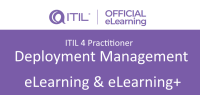In large, multinational companies there has been a shift in IT Service Management (ITSM) strategies because of the blurred lines between business and IT and a change in philosophy.
While DevOps, Agile and ITSM approaches were segregated previously, the coming of ITIL® 4 has led to increased integration.
ITIL 4’s focus on outcomes, risks and value reflects changes happening in corporate culture, based on new levels of collaboration and communication.
And what was happening before only in pockets within companies – recognizing IT as a fundamental and enterprise-wide enabler – is now occurring more across organizations as a whole.
From ITIL v3 Expert to ITIL 4 Strategic leader
My training in ITIL – from achieving ITIL Expert 10 years ago to certifying in ITIL 4 Strategic Leader in 2021 – has always been driven by the need to bring in an outside perspective. It has also been essential in my role in the company’s centre of excellence teams.
My ITIL 4 knowledge feeds into various responsibilities, such as managing the entire IT process model and value streams. This supports IT solutions – including IT service management tools, internal tools and systems – for Ericsson business areas and market areas.
The major work in the past year has been business capability – an area of discussion where process professionals in the business like me were rarely involved. The aim is to map process, tools and information for the identified capabilities and achieve more value by breaking down silos, avoiding duplication of activity and leveraging existing capabilities. In practical terms, this will enable a new, internal interface to help onboard emerging capabilities based on digital platforms – data and analytics, automation, AI and IT cloud.
Ultimately, this is about supporting transformation programmes and complying with any internal and external audits.
ITIL 4 Leader Digital and IT Strategy – helping meet new strategy horizons
Previous IT strategies created in large companies tended to last five years. Today, the new strategy horizon is one year of planning to meet a three-year vision.
This is key to providing senior leadership with insight and direction about what needs to happen in the next phase of development in order to prioritize funding.
ITIL 4 Leader Digital and IT Strategy has supported my work in evaluating new technology and new ways of thinking to compete in a disruptive, digital world.
ITIL 4 modules DITS and DPI working together
The Digital and IT Strategy and Direct, Plan and Improve modules within the Strategic Leader designation are important to combine; ensuring there is strong governance and management commitment to running and monitoring major activities with Direct, Plan and Improve while creating alignment of digital business with IT strategy through the Digital and IT Strategy module.
Through this learning, our transformation programme outcomes are improving due to a common language for the business. This includes working in a more design thinking way – listening to the business and recommending the right solution only when we understand fully what the business wants or needs.
A lot of the emphasis now is on delivering consistent quality and eliminating waste; looking inwardly at the company to question whether there are better ways of running the business and improving performance over time.
News by Chandramohan Sridhara – ICT Architect








